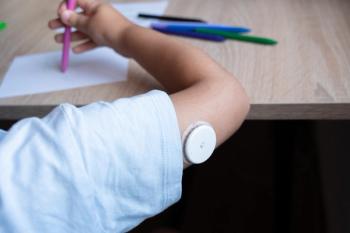
Telemedicine viable method for physical examinations
In a recent study, physical examinations conducted through telemedicine saw consistent results with those from in-person examinations.
Telemedicine physical examination with a mobile device isa viable alternative to in-person examination, according to a recent study published in JAMA Network Open.
Physical examination has remained a valuable tool for preventing, diagnosing, and treating diseases. Telemedicine has also substantially improved, seeing a significant increase in use during the COVID-19 pandemic.
While multiple studies have found no significant difference between in-person and telemedicine methods, there is little data on how the unique challenges in a pediatric setting affect telemedicine treatment. Children at different ages and levels of development will often have difficulties expressing themselves and vocalizing their feelings.
There are inherent difficulties to completing a physical examination through telemedicine, but devices to remotely capture physical examination data are seeing increased use. The TytoPro device is one of these, and can be used to examine patients’ ears, throat, skin, heart, and lungs.
As many devices for remote examination have not been tested in clinical studies, investigators conducted a nonrandomized controlled trial to compare the measurements of telemedicine examinations to in-person examinations.
To compare the 2 methods of examination, investigators used the TytoPro mobile device in the emergency departments of 2 Brazilian pediatric hospitals. The TytoPro device contains a touch-sensitive screen, a high-resolution camera, and an infrared forehead thermometer. Alongside a mobile device, the TytoPro can conduct a physical examination during a video conference.
In the trial, the heart rate, body temperature, heart, lung, and abdominal auscultation of patients was evaluated. Patients also underwent otoscopy, throat and oral examination, and skin examination.
There were 690 pediatric patients seen from January 1 to December 31, 2020. Inclusion criteria included stable conditions and low-complexity symptoms. Synchronous teleinterconsultation and conventional in-person consultation were done for all patients.
Assessments through TytoPro were conducted by a first-year pediatric patient, with a pediatrician guiding the patient remotely. Data from this examination was then transferred to the patient’s electronic health record.
After the initial examination, a separate physician examined the patient in an in-person setting. Standard equipment and procedures were used in this assessment. The consistency between remote assessment and in-person assessment was examined as the primary measure of the trial, with the specificity of the mobile medical device calculated as a secondary measure.
The mean age of participants was 5 years, and about half of participants were female. A chronic disease was seen in 48% of patients, while 32% were using long-term medication, and about 14% reported having an allergy.
Difficulties in auscultations most often occurred in infants, with crying and agitation often occurring while the device was being used.
Skin, mucosa characteristics, heart, lung, and abdominal examinations had a 90% consistency between both methods of assessment. Reduced consistency was seen in otoscopy, throat and oral, and rhinoscopy examinations. However, the consistency remained above 70% for all variables.
The consistency between telemedicine examination and in-person examination was considered satisfactory, indicating telemedicine may be a viable alternative method of physical examination.
Reference
Wagner R, Lima TC, Silva MRTD, et al. Assessment of pediatric telemedicine using remote physical examinations with a mobile medical device: anonrandomized controlled trial. JAMA Netw Open. 2023;6(2):e2252570. doi:10.1001/jamanetworkopen.2022.52570
Newsletter
Access practical, evidence-based guidance to support better care for our youngest patients. Join our email list for the latest clinical updates.














